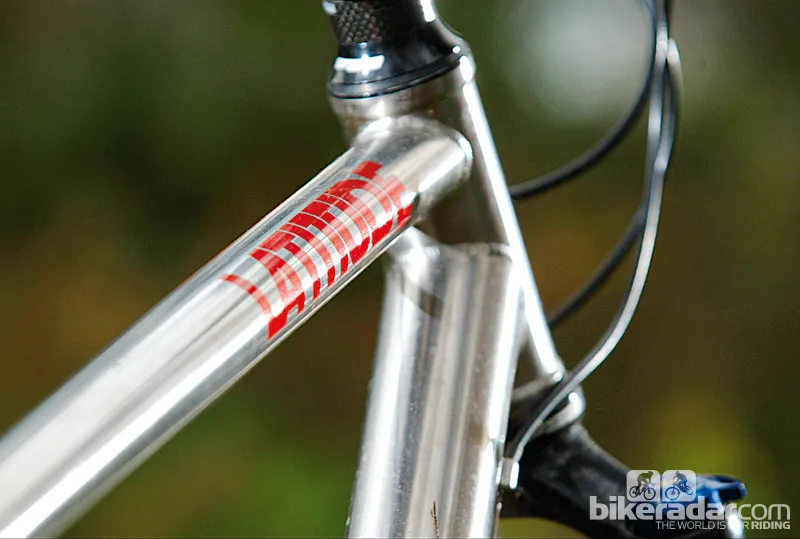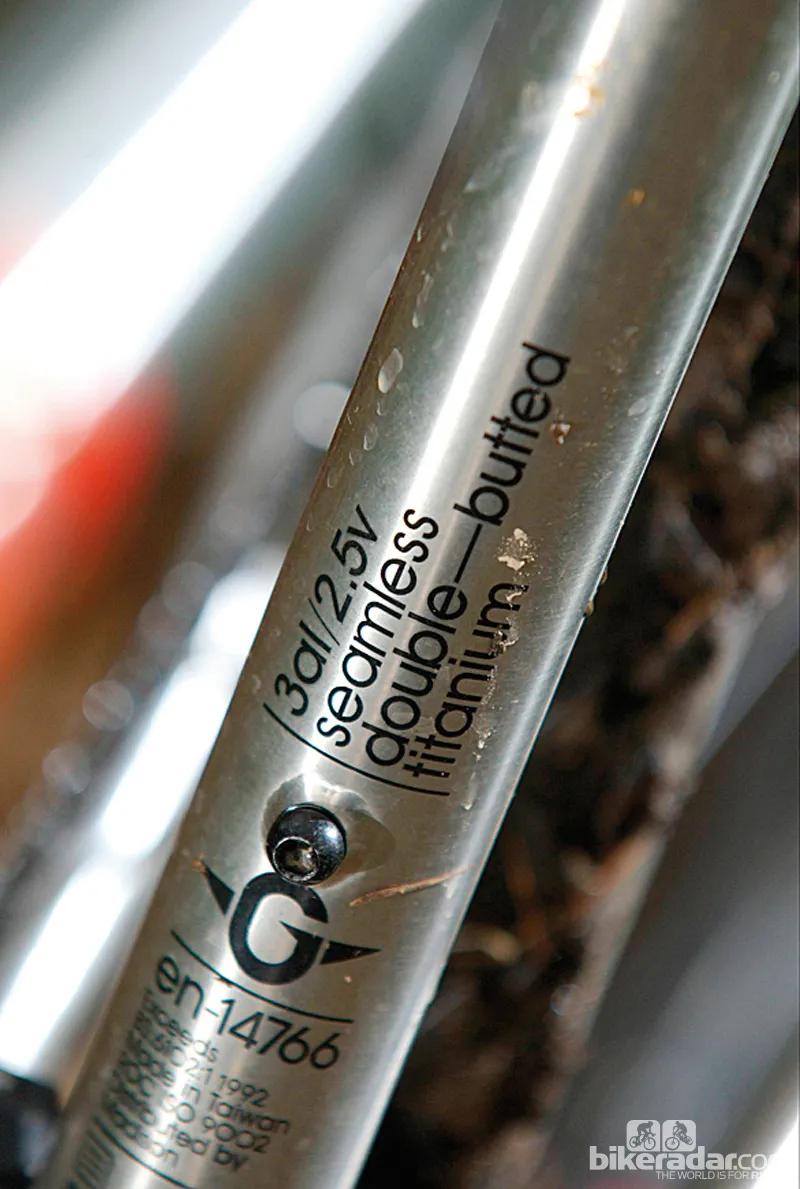Like its steel counterpart, the titanium Latitude isn’t officially available in 2013 – but you can still track it down.
The Latitude Ti looks so similar to the steel one that at first it’s hard – once the price tag is off – to tell it apart. Titanium is less dense and less stiff than steel, but increasing a tube’s diameter rapidly increases its rigidity (by the cube of the diameter increase, since you asked).
The Latitude Ti’s main tubes – and especially its down tube – are noticeably fatter than its steel counterpart’s. They have to be, or the front triangle would have all the torsional rigidity of a sulky child, so this titanium down tube is both fat and impressively flared down at the bottom bracket. The stays aren’t noticeably different to the steel bike’s rear end, though. Curious.
Titanium’s lower density pays off, despite the increase in tube sizes. Our test Latitude Ti had a 700g weight advantage over the almost identically equipped 853 version. And it’s a difference you can feel out on the trail. The Latitude Ti has a tractable, sprightly gait that’s inspiring on climbs – it’s a feel that encourages hard effort at the pedals and rewards it with a friendly can-do feel at any speed.
Yet in other ways it’s hard to separate the titanium from the steel. That fluid springiness is very similar, though the Latitude Ti doesn’t quite have the same ‘snap’ as the 853 under hard, out-of-the-saddle sprints. Vibration is a tad more muted, and it’s supremely comfortable for day-long epics. It’s plusher than steel, but it’s minimal.

Test spec
- Wheels: DT Swiss X430 rims, Shimano SLX hubs
- Tyres: Continental Mountain King, 2.2in
- Crankset: Shimano Deore XT, 22/32/42T
- Cassette: Shimano CS-M771, 11-32T, 10spd
- Gears: Shimano Deore XT
- Brakes: Shimano Deore XT
- Other stuff: Genesis seatpost, bars and stem, Madison saddle
This article was originally published in What Mountain Bike magazine, available on Apple Newsstand and Zinio.


